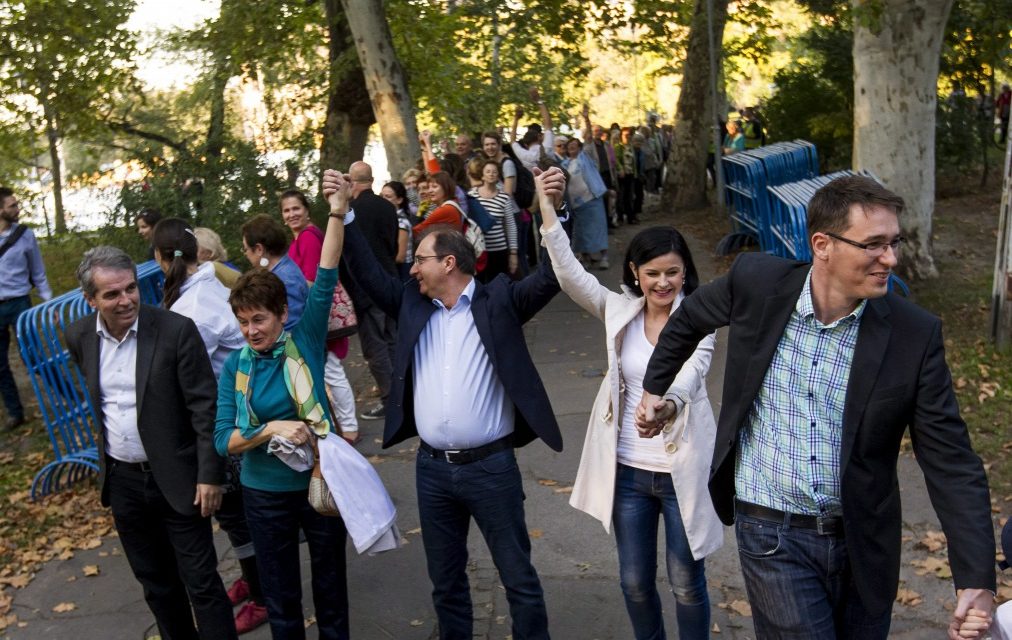While he is worried about the sycamores, the mayor insults the believers to the point of blood, whose argument of the grove protector is not entirely correct either.
As usual, Gergely Karácsony of the Association of Christian Intellectuals responded to his critics on his social media page, although the mayor also attached a video to the post. The essence of his message : he admits that he used a rather strong analogy in relation to the House of Hungarian Music, so he apologizes to those whom he may have offended, but let everyone understand that he was "profoundly morally outraged" by the world-renowned building handed over in Városliget the other day. Namely because of the surrounding trees, as there is a chance that in ten years some plane trees will dry out due to the development. Or not. But may.
The wood-loving politician does not address the fact that for decades the building's site was occupied by dilapidated and abandoned social real concrete ruins, but the problem did not stem from that. Karácsony half-heartedly apologized for this sentence: in the 21st century, building in a park is just as unacceptable as peeing into the holy water container in a church.
this is what the sentence sounded like in Klubrádió's morning program from the voice of a very tired public servant: the "21. building in a park in the 20th century is like peeing into the Holy Cistern in a church, which might fit in, it just destroys what we are there for". That's literally what Christmas said. Does it fit?
No, Mr. Mayor, it doesn't fit in, it doesn't fit in at all. Neither does this analogy.
Anyone who says this does not understand the relationship of religious people with real sacredness, does not consider their sensitivity important, certainly not as much as some sycamores. For the politician who voluntarily renounced his candidacy for prime minister, a park and some green space represent "sanctity", i.e. environmental protection is his religion, if we start from the logic that can be derived from his scandalous statement.
Compared to this, it is almost a "trifle" that Karácsony slightly misinterprets the role and history of Városliget. He says that those who do not understand why it is sacrilegious to build the House of Hungarian Music there do not understand "what a fantastic value a public park that is several hundred years old is in the area of Budapest".
First of all: "hundreds of years ago", in the eighteenth century, there was still a marsh in the area, the afforestation and the creation of the public park took place at the beginning of the nineteenth century, but even then this was still well outside the territory of the city. Although it became a popular hiking spot, the developments stalled, but at the same time, the enthusiastic authorities wanted to give the park, or as it was called at the time, the City Forest, a "function" right from the beginning. Stunt performers and drink-measures were held there, then there was a spa, a zoo, a circus, the thousandth anniversary of the founding of the state, and during the Millennium, a world exhibition was organized in the Park.
Therefore, no less than eight hundred trees were cut down, and buildings and halls, which were still planned as temporary, were erected. However, the event was a huge success, crowds turned up for the large-scale program.
Social pressure and success decided that the buildings, such as the Industrial Hall, the Vajdahunyadvár, the Transport Museum or the Olof Palme House, would remain permanently in the public park.
People didn't just want to relax in the green, they wanted to have fun, get cultured, and recharge their batteries.
At that time, Városliget was already different - and more - than other parks. This is precisely why the Museum of Fine Arts and the Art Gallery are nearby, and why the Budapest International Fair and its predecessor have been held here for decades since 1907. That is why the Petőfi Hall, which was demolished in the framework of the current developments, was built on the area later.
Liget was never really a "soft lap" of nature, since its creation it was always more than a "simple" park. This tradition has been taken over by the current project called Liget Budapest, as part of which the House of Hungarian Music has already been completed, the Olof Palme house has been renovated and the wonderful rose garden has returned to its front, the green space has improved, parts suitable for leisure programs have been created and taken underground the shameful parking lot on Dózsa György út, the "green-roofed", also award-winning Ethnographic Museum, will soon be handed over. For the time being, Karácsony and the left are stalling the rest, saying that with the developments the government would "rape" not only nature, but also the social will.
However, the history of Liget does not justify this policy, nor do the project elements that have already been implemented, following which
so far, the green area has only grown, the park has become more organized and family-friendly.
And people seem to love it. the planning of the car exemption is just now coming to the fore , we can only hope that the mayor, who otherwise does not perform very well in planting trees, does not consider it a sacrilege.
In any case, this story, which is not without insults, somehow seems to confirm the lesson that left-liberal politicians, even in leading positions, prefer to keep their mouths shut and possibly prevent certain developments, while they are less able to show success in the field of creation and construction. This is especially true for Christmas, which spoils the holiday.
Dániel Kacsoh / mandiner.hu
Featured image: MTI / Zsolt Szigetváry












